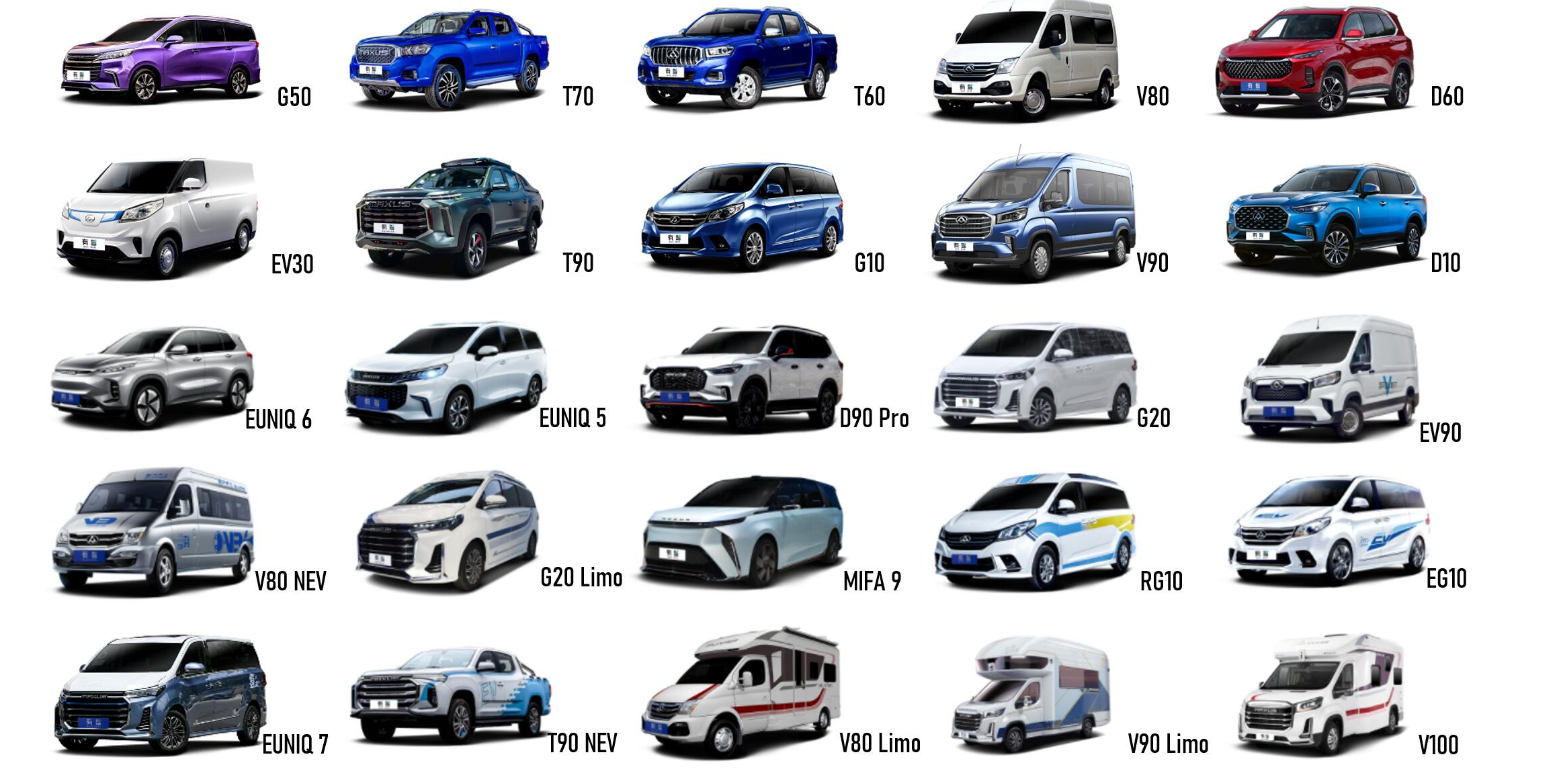
Maxus EV30 Car lists
- Categories:News
- Time of issue:2023-03-17 23:20
- Views:
Maxus EV30 Car lists
MotorTec Auto Parts is MAXUS EV30 spare parts supplier in China. We are committed to providing customers one-stop parts solution on MAXUS's EV30 full range of parts, including engine parts(cylinder head, crankshaft, camshaft, engine valve, connecting rod, oil pan/oil sump, engine piston, engine piston ring, valve chamber cover, intake manifold, exhaust manifold, water pump, oil pump, turbocharger, crankshaft pulley, flywheel...), suspension parts(shock absorber, engine mounting, coil spring, bushing, control arms, ball joint...), chassis parts, brake pads, clutch kits, belts, filters, fuel pump, spark, ignition coil, timing kit, sensors, cables, radiators, wheel hub, bearing, lamps, fender, door, engine hood, lock, door handle, power steering rack, power steering gear, power steering pump, turbocharger, hoses, ECU, bumpers...
Including:G10, G20, G50, T60, T70, T90, V80, V90, D10, D60, EUNIQ 5, EUNIQ 6, EUNIQ 7, EV30, EV90, D90 Pro, V80 NEV, G20 Limo, MIFA 9, RG10, EG10, T90 NEV, V80 Limo, V90 Limo, V100...
You are welcome to contact us at john@motortec.com.cn or find our CONTACTS page.
https://www.motortec.com.cn/Contact_us.html
| B00004199 | C000124831 | C00296959 | C00047651 | C00124521 | C00124834 | C00167264 | C00243569 |
| B00004653 | C000165953-M001 | C00337187 | C00047651 | C00124820 | C00142753 | C00217494 | C00243570 |
| B00004683 | C000165954-M001 | C00034840 | C00047651 | C00124821 | C00142754 | C00217494 | C00243570 |
| B00005177 | C000166112 | C00034840 | C00053812 | C00124821 | C00145644 | C00217496 | C00280449 |
| C00004540 | C000166115 | C00034840 | C00059723 | C00124822 | C00145644 | C00217496 | C00280449 |
| C000124830 | C000206257-4100 | C00047650 | C00065153 | C00124823 | C00145645 | C00235752 | |
| C000124830 | C000206588-4100 | C00047650 | C00123419 | C00124834 | C00145645 | C00235753 | |
| C000124831 | C00296959 | C00047650 | C00123419 | C00124834 | C00167264 | C00243569 |

Contact us
MotorTec (Nanchang) Auto Parts Ltd.
Address: No. 102 building, No.1167 1st Fushan Road, Xiaolan Economic Development Zone, Nanchang City, Jiangxi Province
Whatsapp/Wechat: +86 189 7088 5876
E-Mail:john@motortec.com.cn
Copyright 2021 MotorTec (Nanchang) Auto Parts Ltd. All Rights Reserved 赣ICP备2021008218号 SEO

 +86 189 7088 5876
+86 189 7088 5876 



 E-mail
E-mail  SKYPE:+86 132 8589 2767
SKYPE:+86 132 8589 2767 